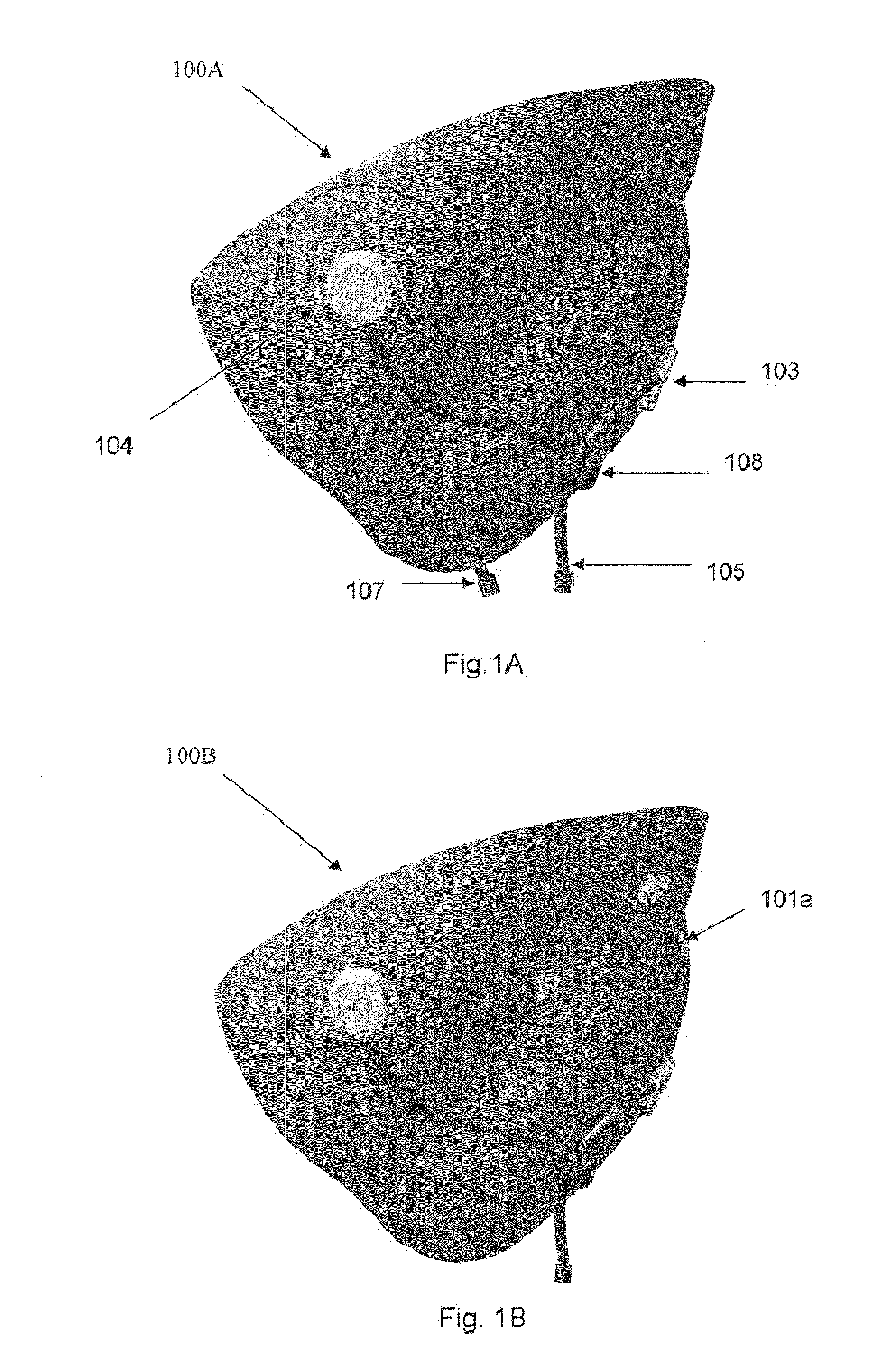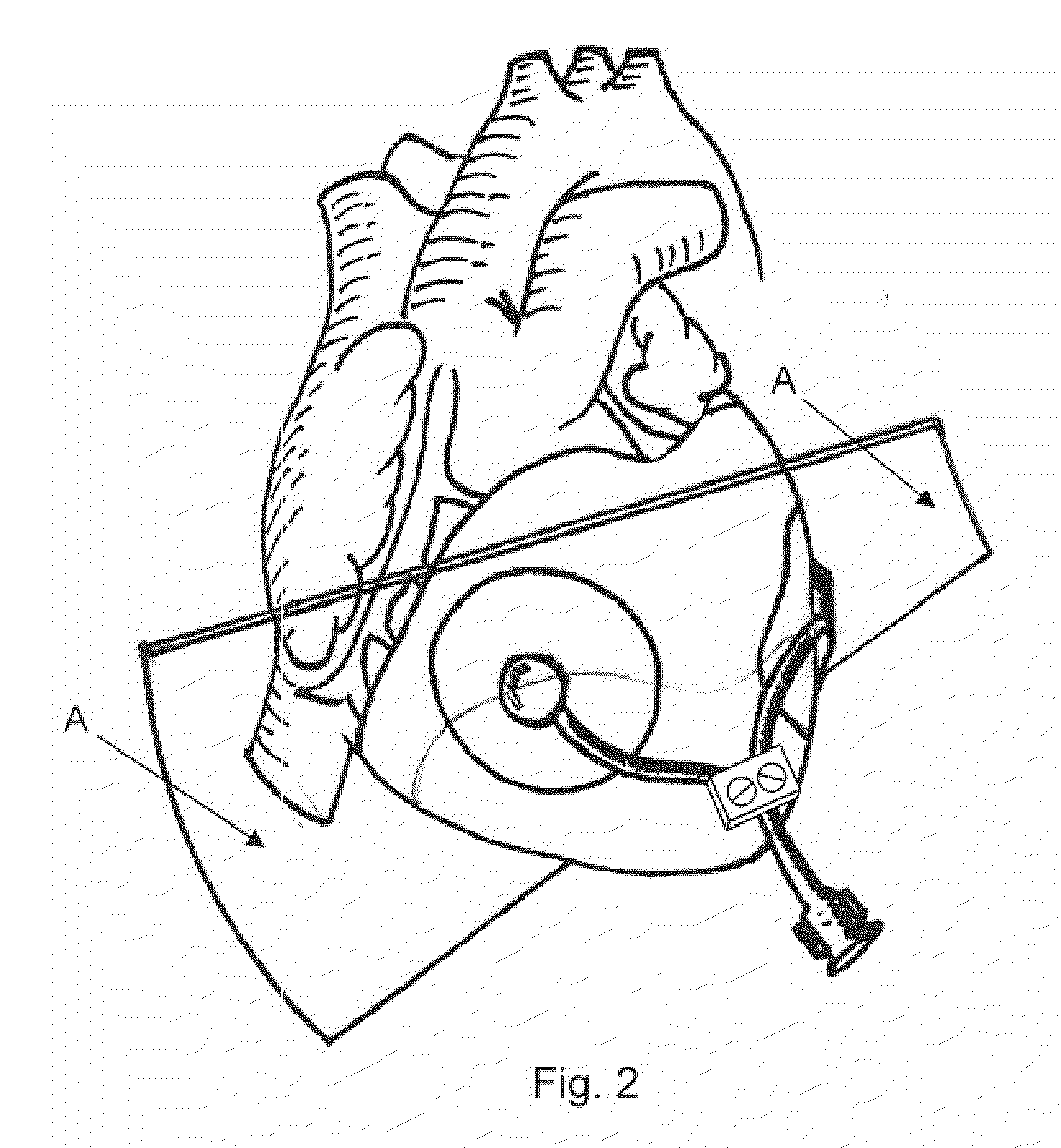Cardiac Compression System
a compression sac and heart tube technology, applied in the field of cardiac compression sac system, can solve the problems of discarded hard-fixation methods, epicardial adhesion fixations, sutures,
- Summary
- Abstract
- Description
- Claims
- Application Information
AI Technical Summary
Benefits of technology
Problems solved by technology
Method used
Image
Examples
Embodiment Construction
[0032]CRCS Design Objectives and Embodiments
[0033]Major issues associated with CRCS enforcement include fixation and synchronous sac actuation in response to heart contraction and relaxation. In order to stimulate electrophysiological reverse remodeling, pumping assist should be applied over the ventricular free wall region. The present CRCS design intends to deliver bi-ventricular epicardium compression in synchrony with the heart rhythm, for which atrioventricular conduction delay control and simultaneous right and left heart assistance are the design objectives to achieve. In the following, the fixation method and cardiac resynchronization pumping design are explained.
[0034]a. Soft-Fixation
[0035]Hard-fixation methods such as vacuum suction, glue adhesion and stay suture are excluded presently. Instead, a soft-fixation strategy which allows a non-interfering sac be snuggly placed around the heart is considered. Soft-fixation means a fixation that restricts or wraps the device arou...
PUM
 Login to View More
Login to View More Abstract
Description
Claims
Application Information
 Login to View More
Login to View More - R&D
- Intellectual Property
- Life Sciences
- Materials
- Tech Scout
- Unparalleled Data Quality
- Higher Quality Content
- 60% Fewer Hallucinations
Browse by: Latest US Patents, China's latest patents, Technical Efficacy Thesaurus, Application Domain, Technology Topic, Popular Technical Reports.
© 2025 PatSnap. All rights reserved.Legal|Privacy policy|Modern Slavery Act Transparency Statement|Sitemap|About US| Contact US: help@patsnap.com



